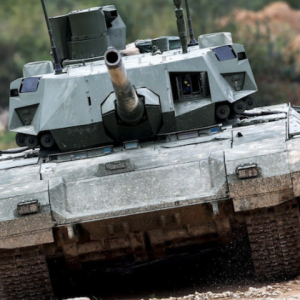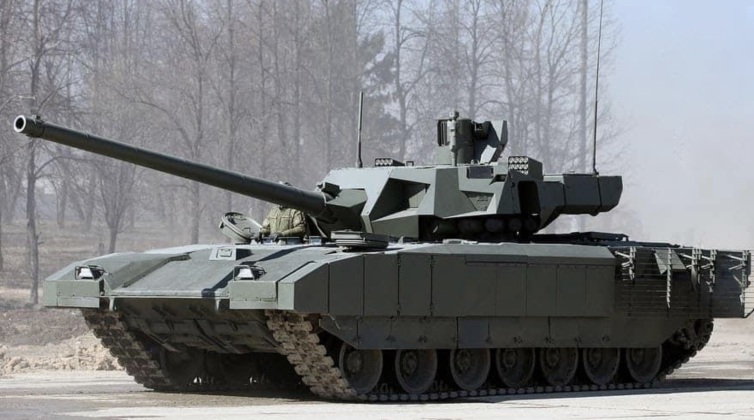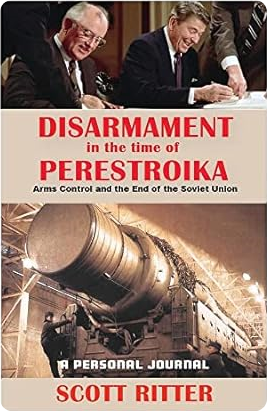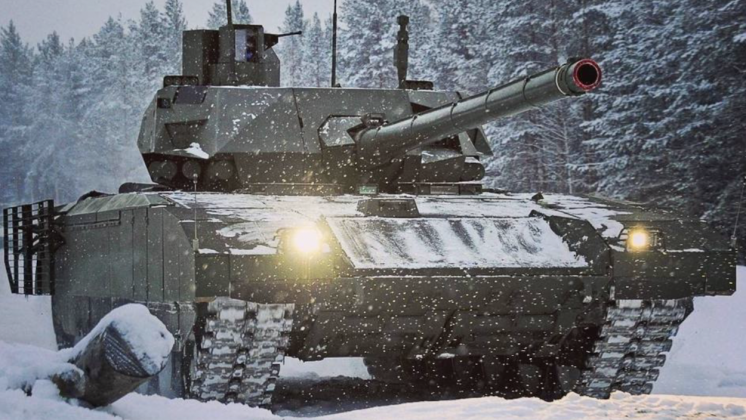
How the T-14 Armata Tank Was Built to Survive Hits From American Depleted Uranium Shells
Keep up to Date & Bypass the Big Tech Censorship
Get uncensored news and updates, subscribe to our daily FREE newsletter!
Since the unveiling of Russia’s T-14 Armata in 2015, which is considered one of just three fourth generation battle tanks in service anywhere in the world, Russian media outlets and officials have highlighted a number of the vehicle’s features which are considered particularly revolutionary. The T-14 is currently in production alongside the lighter T-90M, which entered service in 2020 and integrates many of the same technologies onto a lighter and more conservative platform. The T-14 is a higher end and more costly tank which is seen to have considerable potential for modernisation, with its chassis also used as the basis for the T-15 personnel carrier. Alongside a very high degree of armour protection, the tank has gained considerable attention for housing all three crew side by side in an armoured central compartment controlling all features electronically – something rival tank producers have yet to mirror in their own designs. The tank’s main armament the 2A82-1M 125mm smoothbore cannon is thought by many analysts to be the most powerful tank gun in the world, but the T-14’s large size allows it to accommodate much larger munitions with the possibility of using a 152mm cannon, and possibly a larger one still, having been repeatedly raised.

T-14 Armata Tank
In response to the advanced armour used by the Soviet tanks during the Cold War, which proved almost impossible to penetrate for some of the most advanced U.S. and British M60 and Chieftain tanks during mass tank battles of the Iran-Iraq War, the U.S. has since the waning years of the Soviet era relied on use of depleted uranium rounds to provide its own anti-tank weapons, including the 120mm main cannons on its M1 Abrams tanks, with a greater penetrative capability against enemy armour. Although such weapons have never been tested against tanks built for the Soviet military or the Warsaw Pact, and have only been used against heavily downgraded armour built for the third world in the 1980s, it is considered far more effective due to depleted uranium’s high density as an element. Uranium rounds are produced from nuclear waste, but have had significant negative side effects for those living in areas where the U.S. Military has used them in Iraq and Yugoslavia including soaring cancer rates and high numbers of birth deformities. While it has been hotly contested whether the most advanced tanks in the Soviet military such as the T-80UK, T-72BM or the T-64B would have been able to survive hits from American Abrams tanks using depleted uranium rounds, Russia’s latest tanks and the T-14 in particular are well armoured enough to survive a wide range of attacks and were built with withstanding such rounds in mind.
| Recommended Books [ see all ] | ||||
|---|---|---|---|---|
 |  |  |  |
 |

T-14 Armata Tank
Multiple Russian sources have reported that the latest variants of the Afganit active protection system used on the T-14, which have also been integrated onto the T-90M, can shield the vehicles from uranium armour-piercing discarded sabot (APDS) shells. The Afghanit system was designed to protect vehicles from anti-tank rockets and grenades, and provides protection 360 degrees around the vehicle. A source in the Russian Defence Ministry quoted by Russian state media stated regarding protection systems being developed shortly after the T-14 was unveiled: “The first APDS core interception tests were conducted this year. The new (active protection) system was able to handle even such difficult targets, despite the fact that intercepting an APDS was previously considered impossible. Special attention was paid to dealing with depleted uranium APDS cores employed by the NATO countries’ armoured forces. We’re currently working on further upgrading the system and improving its computer algorithms responsible for intercepting targets.” The Afghanit was developed by the KBP Instrument Design Bureau, and employs a combination of active phased antenna array radars and UV detectors to identify and track incoming projectiles, and mini-mortar systems using fragmentation rounds to intercept and destroy incoming threats in flight. It uses a small homing projectile far superior to the large shotgun blasts of the older Drozd and Arena protection systems, and can intercept incoming threats going up to 1.7 kilometres per second – much faster than current NATO tank guns can fire.
Sign up to our newsletter for more news like this
Source: https://tinyl.io/4g9q


